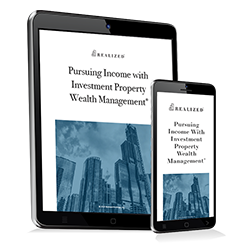
The earlier you establish a retirement plan and continue to make contributions, the better off you’ll potentially be. What better way to start retirement than to be financially prepared and stress-free?
Each retirement plan has different annual contribution limits, possible tax advantages, and other associated costs and fees. Here is what you can expect if you’re curious about how much some of the more common retirement plans cost.
Individual Plans
Individual Retirement Accounts (IRAs) are among the most common and are a tax-advantaged investment account where individuals can invest in stocks, bonds, or mutual funds. Two common types of IRAs and associated costs are:
- Traditional IRA: The IRS doesn’t require a minimum contribution to open a traditional IRA, but some providers may require a minimum and you must have earned an income. If you want to withdraw earnings before the age of 59½, you’ll pay a 10% penalty on funds you take out. Contributions are tax-deductible and your earnings grow tax-free, but withdrawals are subject to income tax.
- Roth IRA: Expect to possibly pay maintenance fees, transaction fees/commissions, and mutual fund expense ratios with a Roth IRA. The Roth IRA retirement plan is funded with after-tax dollars and contributions are not tax-deductible. Providers may charge an annual maintenance fee between $25 and $50 but some might not charge anything at all. If your provider allows you to trade stocks and ETFs, each trade can cost between $5 and $20. Expense ratios are operational costs and are calculated as an annual percentage of invested assets in mutual funds.
Defined Contribution Plans
Since their introduction, defined contribution plans dominate the retirement plan marketplace. Here’s what you can expect to pay for common defined contribution plans:
- 401(k): Contributions and earnings to a 401(k) benefit from tax-deferment with many employers matching employee contributions. There are three types of fees: investment fees, administrative fees, and fiduciary and consulting fees. Employers choose to pay either one or both the administrative fees and fiduciary and consulting fees and employees always pay the investment fees. Fees between 1-2% are considered to be average.
- 403(b): Offered by schools and other eligible non-profit organizations, 403(b) retirement plans are tax-sheltered annuity plans. Investment fees for 403(b) plans are higher than 401(k) fees due to the available investment selection. Charges on variable and fixed annuities (1.15-2.25%) are much higher than mutual funds (0.97%). Investing in mutual funds would considerably lower your annual expense ratio.
Defined Benefit Pension Plan
Pension plans or defined benefit plans are retirement plans that are sponsored and funded by employers. Employees are paid fixed income payments upon retirement. Employers get a tax break on contributions made to pension plans and funds grow tax-deferred. The employer covers the set-up and annual administration fees and makes contributions.
CARES Act
We wanted to mention how retirement plans and IRAs were affected by section 2202 of the CARES Act, which was enacted on March 27, 2020. The CARES Act contained special rules for retirement plans and IRAs with expanded distribution options and favorable tax treatment for up to $100,000 of coronavirus-related distributions from eligible retirement plans. The limit on the amount a qualified individual may borrow from an eligible retirement plan (not including an IRA) was also increased and allows a plan sponsor to provide qualified individuals up to an extra year to repay their plan loans.
Individuals are qualified if:
- You are diagnosed with the virus SARS-CoV-2 or with COVID-19 by a test approved by the CDC.
- Your spouse or dependent is diagnosed with SARS-CoV-2 or with COVID-19.
- You experience financial consequences as a result of being quarantined, furloughed or laid off, or having work hours reduced due to SARS-CoV-2 or COVID-19.
- You experience financial consequences as a result of being unable to work due to lack of child care due to SARS-CoV-2 or COVID-19.
- You experience financial consequences as a result of closing or reducing hours of a business that you own or operate due to SARS-CoV-2 or COVID-19.
Qualifying individuals may withdraw funds from their retirement account before the age of 59½, and the additional 10% tax on early distributions does not apply.
We’ve mentioned only a few but there are many more retirement plans with different costs and benefits. There’s not much you can do about fees and other costs with certain providers, but if you do your research and speak with a professional, there are possible alternatives. If you have questions about a specific retirement plan and costs, speak with a wealth management professional to go over your options.



